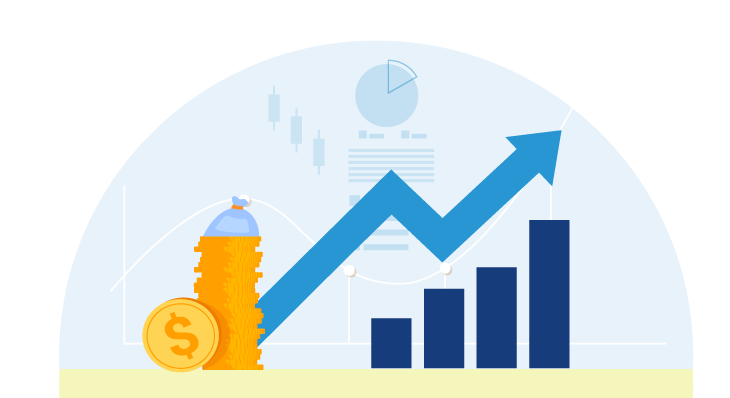The ROI of BI: Quantifying the benefits of business intelligence
When we think about a return on an investment we’ve made — whether hardware, software or even people — we often measure that investment in dollars. While this makes sense, it’s often intangible benefits that give a business its competitive edge.
While there’s no simple mathematical formula that can measure the exact return you’ll get on your BI solution, it’s still important to understand the value of visualizing your data and how you can justify the associated costs.
But, if you’re trying to justify the expenditure to the C-level suite, you’ll need some hard numbers. A good starting point would be an ROI calculator, which can help you determine the costs and savings of a realistic business scenario.
The tangible benefits of BI
An ROI calculator can help you determine the tangible costs of rolling out a BI solution, including software, support, training, maintenance, and personnel costs. Do you have all the skills you need in-house? Will you need to hire a business analyst or data scientist?
You can also calculate any savings you’ll get from retiring legacy systems or retiring multiple data integration tools across siloed departments (and if you can measure it, from reducing the cost of data collection).
After the solution is rolled out, you can measure cost savings by determining how many hours are being saved on specific tasks. Perhaps instead of spending five hours running queries, you can get the job done in five minutes. Perhaps you can then reduce the amount of time spent writing up reports on those queries. Continue to measure this ROI on a regular basis (such as monthly) so over time you’ll get a better sense of the true ROI.
The intangible benefits of BI
Many of the benefits derived from having more timely, accurate data are hard to quantify in dollars. That’s why determining the ROI of BI is often a rather complicated process. Freeing employees from time-consuming, manual tasks can boost productivity, but how do you measure that?
Access to timely, accurate data is more important than ever. The amount of data created over the next three years will be more than the data created over the past 30 years, according to IDC. In a 2020 report, the research firm found that the pandemic is contributing to this enormous growth in data by “causing an abrupt increase in the number of work from home employees and changing the mix of data being created to a richer set of data that includes video communication ...”
Being able to home in on the data you need and represent it visually can help you make sense of that data — and then act upon it. With accurate, near real-time data at your fingertips, you’re able to make better-informed decisions. You’re also able to see the impact of those decisions and make adjustments where necessary, such as making on-the-fly tweaks to a highly targeted marketing campaign that can drive revenue.
Turning data into insights
BI can be used to drill down into the data and understand profitability by various business attributes, such as product category or type of customer. It could also be used to see if a rebate, loyalty, or incentive program is resulting in more sales or higher-margin sales. And, ultimately, it could be used as the basis for predictive analytics, so you have a better understanding of how to retain inactive customers and keep loyal customers happy.
At the same time, it could save time — and headaches. Manually integrating data sources is a time-consuming process (including the time required to prepare the data). Depending on your business, the data may already be stale by the time it’s collated into a report. Manual processes are also prone to error, some of which could be costly. When those processes are automated, it means fewer errors and less duplication of effort.
When users are spending less time on manual, tedious tasks, they can turn their attention to more creative or value-added work — and that has the potential to create more revenue for the business. The faster you can turn data into insights, the faster you’re able to get a return on your investment.
There will be direct and indirect benefits; some numbers can be quantified, some can’t. But we’re living in a digital era where data is, by far, our greatest competitive advantage — and it’s nearly impossible to put a price on that.
About the Author

Vawn Himmelsbach is a writer and editor specializing in enterprise IT, writing for national newspapers and technology trade magazines on everything from AI to zero-day threats. She also spent three years working abroad as an Asian correspondent, covering all things tech.
Follow on Linkedin



Follow Us
Support